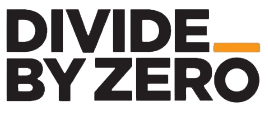Recently we contributed in an article published by Automotive product finder magazine.
Electric vehicles (EV), which are coming up in a big way, will need different body structure compared to vehicles using Internal Combustion Engine (ICE). In this interview, Swapnil Sansare, CEO and Founder, Divide by Zero Technologies (DBZ), explains how automakers are leveraging on additive manufacturing (3D printing) technology to fasten the body design & development process.
What kind of solutions do you offer to automakers in body designing space?
The current market situation is volatile. Assembly lines of products have shorter lifespans due to constant innovation, government regulations and design changes from market feedback. Divide by Zero (DBZ) is helping many OEMs with 3D printed on-demand manufacturing of assembly jig-fixtures, wherein the cost of manufacturing these fixtures is much lower and speed of production is multifold faster. This is possible with our all-new AION 500 MK3 high-speed 3D printing platform that can print 10 times faster than any other plastic extrusion-based 3D printer.
How are automakers leveraging on additive manufacturing (3D printing) technology to fasten the body design process?
Automotive has been the biggest consumer of additive manufacturing (AM) in its initial stage itself. In fact, 3D printing conquered the global map purely because of the worldwide spread of the automotive industry. Traditionally, the use of 3D printing in automotive was limited to first level prototyping only. But advanced research and innovation in this field is taking AM to an altogether different level.AM, which can be used in the process and quality improvements, offers greater flexibility at a lower cost using for design & devolvement. Now that a variety of affordable 3D printers and consumables are introduced into the market so even the reach of the technology has improved. Customized tooling can be built using 3D printing. Automakers can achieve weight reduction, driven by the complexity of designs, with 3D printing. In a nutshell, earlier additive manufacturing was being used solely for part prototyping. The automotive industry is a great example of what can be achieved with the technology at all stages of the production process at the global level.
How can 3D printing help automakers in developing electric vehicles (EV)?
We will need different body structure for EV as compared to ICE vehicles because EV vehicles are simple in powertrain, and has less weight, number of body parts, vibration & noise than ICE. With reference to this 3D printing will play a major role in new product development and manufacturing of EV in upcoming days. AM will help the automotive industry in innovation and understanding the market feasibility. Beyond that, it will help in inventory reduction with the creation of a digital library. It helps in weight reduction and part simplification which leads to a shorter assembly process and lower production cost. For example, Chinese firm XEV has started manufacturing an electric car using AM technology. The car has 57 plastic parts and most of them are 3D printed, as a result, cost and time to the market are reduced considerably. The company didn’t invest any money on an assembly line, tooling or inventory. Also, these cars can be specifically customized to include storage boxes instead of a passenger seat.DBZ is working on similar lines and wants to bring a drastic change in the Indian automotive industry.

